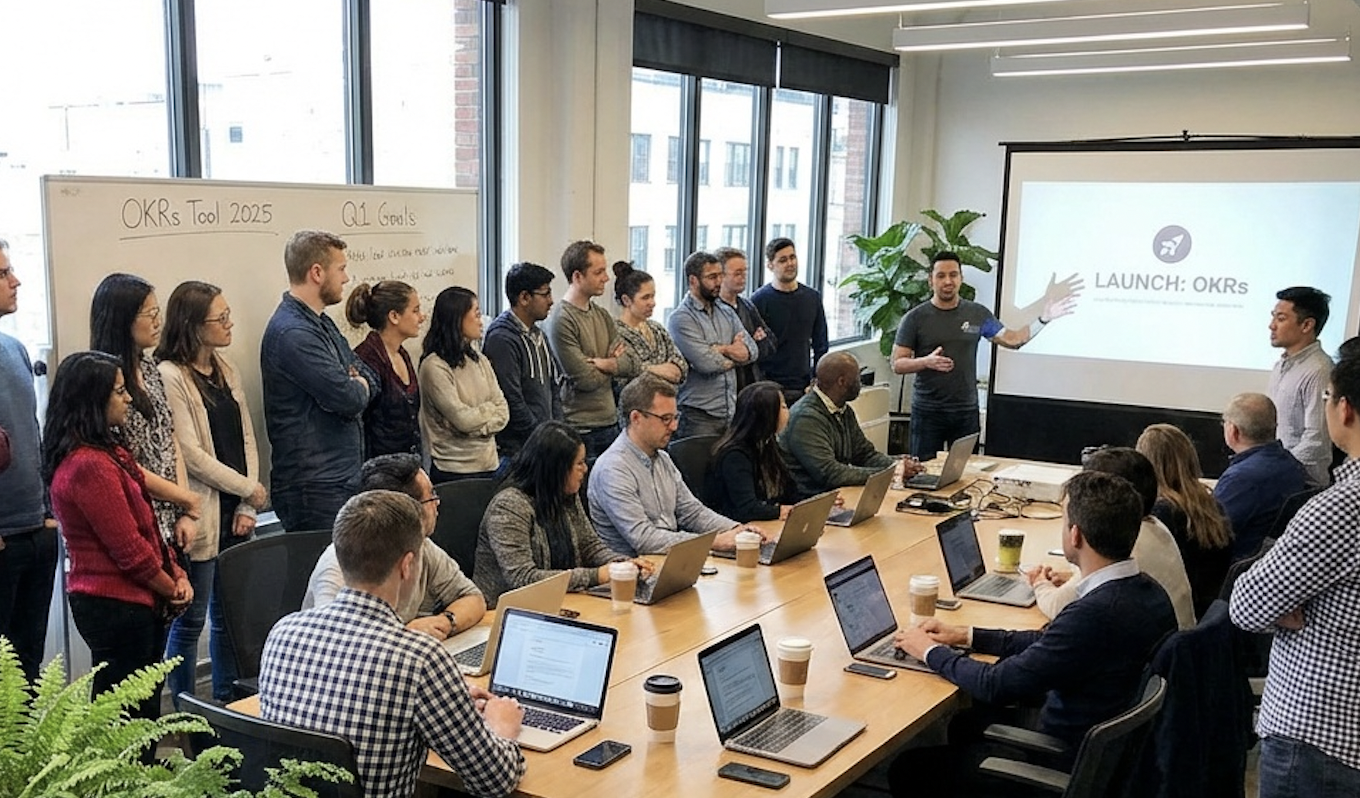You can have the cleanest OKR template in the world. You can color-code every cell, automate every check-in, and still… be flying blind.
Why? Because your team isn’t telling you the full story.
If people are afraid that a “red” Key Result will hurt their reputation, performance review, or even job security, they’ll do what humans do best: protect themselves.
They’ll lower targets, fudge updates, or stay quiet until the end of the quarter.
That’s not a goal-setting problem. That’s a psychological safety problem. And if you don’t solve it, your OKRs will turn into a performance theater - lots of slides, very little learning.
This article will show you how to design and run OKRs in a way that keeps honesty alive. Because without honesty, OKRs can’t work.
The Connection Between OKRs And Psychological Safety
OKRs (Objectives and Key Results) are supposed to stretch your team - ambitious enough to inspire, specific enough to measure.
But stretch goals only work if people feel safe admitting when things aren’t on track. Psychological safety is that foundation:
Without it, OKRs turn into a scoreboard people avoid looking at. With it, they become a learning system your team actually uses to make better decisions.
What Fear Does To OKRs
When psychological safety is missing, you’ll see these patterns:
- Sandbagging: Setting safe targets to guarantee a green checkmark.
- False greens: Reporting “on track” until the final week, then quietly missing.
- Delayed blockers: Problems stay hidden until they’re too big to fix.
- Avoidance of big bets: Choosing projects with predictable outcomes over ones with true upside.
- Silent retros: Post-quarter reviews where no one says anything uncomfortable.
It’s not that people are lazy or deceptive - it’s that the system punishes truth and rewards optics.
Signs Your Team Doesn’t Feel Safe With OKRs
You might have a psychological safety gap if:
- Every KR is green all quarter.
- The most “ambitious” Objective is just last quarter’s KR with a higher number.
- Cross-functional OKRs are rare (too much risk of shared blame).
- Blockers only surface at end-of-cycle reviews.
- Team members say “I’m not sure” less often than they should.
If two or more of these sound familiar, you’ve got a culture problem, not just a planning problem.
How To Make OKRs Psychologically Safe Without Lowering Standards
Here are five concrete moves to fix the culture while keeping OKRs ambitious.
1. Make misses visible - starting with leadership
If leaders never miss, neither will the team. Model the behavior by sharing when you miss a KR and what you learned.
The message: A miss is data, not shame.
2. Redefine “red” as a success signal
In a safe OKR culture, a KR going red mid-cycle is a good thing - it means you caught the problem while there’s still time to change course.
Instead of asking, “Why is this red?”, ask:
“What’s the signal telling us, and what’s our next move?”
Over time, people learn that surfacing red early is valued.
3. Remove direct comp linkage
If bonuses or raises hinge directly on hitting OKRs, honesty dies. Keep performance evaluations focused on behaviors, decision-quality, and contribution - not just KR completion rates.
Include a clear policy line in your OKR guide:
“OKRs are for alignment and learning. They are not a direct input to compensation decisions.”
4. Change the mid-cycle conversation
Mid-quarter reviews should be learning reviews, not status updates.
A good mid-cycle agenda:
- Signals – What’s moving the metrics (up or down)?
- Risks – Where are we off track, and what’s the cause?
- Shifts – One concrete change per KR for the next cycle.
- Stops – What we’re dropping to free up resources.
These meetings are short, focused, and collaborative - not interrogations.
5. Praise the behavior you want
Every time someone flags a risk early or admits uncertainty, thank them - publicly.
This reinforces that transparency is part of the job.
Structural Tweaks That Support Safety
You can hard-wire some of this into your OKR process:
- 2–3 KRs per Objective – Keeps focus and makes each KR’s status easier to discuss honestly.
- Mix of lead and lag metrics – Encourages people to track what they can influence directly, alongside the end goal.
- Public dashboards – Company-wide visibility removes the temptation to hide.
- Shorter cycles – Monthly or 6-week OKRs give more opportunities to course-correct.
Language Swaps That Lower Fear
These phrases seem small, but they reshape the tone of every review
A Healthy OKR Cycle With Safety Built In
The key: every stage invites truth without punishment.
Quick Safety Check: 5 Questions
Run this monthly as a pulse survey:
- I can share when a KR is off track without fear of negative consequences. (1–5)
- We treat missed KRs as learning opportunities. (1–5)
- Our OKR reviews focus on insights, not blame. (1–5)
- I feel comfortable raising blockers early. (1–5)
- We adjust our plan mid-cycle when needed. (1–5)
Scores below 4 mean you’ve got work to do.
The Role Of OKR Tools
Tools can either amplify safety or kill it.
If you’re using something like OKRs Tool, keep it simple: automate reminders, make KRs visible across teams, and focus the conversation on why, not just the number.
Final Thoughts
OKRs are a system for focus and learning. Psychological safety is the fuel that makes that system run. Without it, people aim low, hide the truth, and the whole exercise collapses into a quarterly performance report.
Create a culture where “red” means “let’s fix this” and “missed” means “we learned something new.” Do that, and your OKRs won’t just track progress - they’ll accelerate it.






